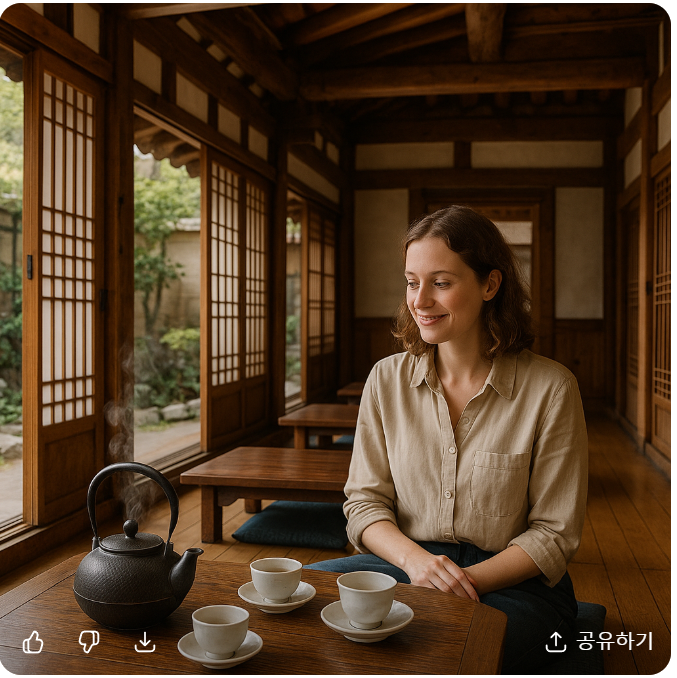Exploring Korea’s Best Traditional Tea Houses: History, Flavors, and Hidden Gems
※ This article is based on official information as of August 14, 2025.
Summary at a Glance
Step into the serene world of traditional Korean tea houses, where centuries-old rituals meet modern hospitality, offering visitors a taste of authentic flavors and cultural heritage.
Tea has been at the heart of Korean hospitality for over a thousand years. From the Silla Dynasty’s Buddhist temples to the refined gatherings of the Joseon royal court, tea drinking in Korea has evolved into a practice that nourishes both body and mind. Unlike the hurried pace of modern coffee shops, traditional Korean tea houses (dabang and chachip) invite guests to slow down, savor the moment, and immerse themselves in a calming atmosphere rich with history.
In recent decades, these spaces have experienced a revival—not only as cultural preservation projects but also as sanctuaries for tourists and locals seeking tranquility amid Korea’s bustling cities.
A Brief History of Korean Tea Culture
Korea’s tea culture dates back to the 7th century, when Buddhist monks brought tea seeds from China. Initially, tea drinking was a meditative ritual, used to promote mindfulness. By the Goryeo Dynasty (918–1392), tea became a ceremonial practice among the aristocracy, often accompanied by poetry readings and scholarly discussions.
The Joseon Dynasty (1392–1897) saw the refinement of tea etiquette into darye (tea ceremony), which emphasized simplicity, natural beauty, and spiritual harmony. The choice of tea—green, fermented, or herbal—was deeply tied to the seasons and health benefits.
What Makes a Traditional Korean Tea House Special
A genuine Korean tea house offers more than just tea—it’s an immersive cultural space:
- Architectural charm – Wooden beams, sliding paper doors, stone courtyards, and antique décor create an atmosphere of timeless elegance.
- Seasonal menus – Teas often change with the seasons; spring might feature plum blossom tea, while autumn offers roasted grain tea (boricha) or chrysanthemum tea.
- Mindful service – Tea is often prepared at your table, with careful attention to temperature, steeping time, and presentation.
- Natural soundscape – Many tea houses incorporate the gentle sounds of water fountains, birdsong, or traditional Korean music in the background.
Popular Types of Korean Teas Served
- Green Tea (녹차, nokcha) – Especially from Boseong and Hadong, known for its fresh, grassy flavor.
- Omija Tea (오미자차) – Made from “five-flavor berries,” offering a unique balance of sweet, sour, salty, bitter, and pungent notes.
- Gukhwa Tea (국화차) – Chrysanthemum petals steeped for a delicate floral aroma.
- Yuja Tea (유자차) – Sweet and tangy citrus tea, also valued for its vitamin C.
- Insam Tea (인삼차) – Ginseng-based tea for energy and health.
Step-by-Step Guide to Visiting a Tea House in Korea
- Choose the location – Many are found in Seoul’s Insadong, Bukchon Hanok Village, and Samcheong-dong, or in cultural cities like Jeonju, Gyeongju, and Andong.
- Remove your shoes – In more traditional settings, you’ll be seated on heated floors (ondol).
- Select your tea – Ask for seasonal recommendations or specialty blends unique to the shop.
- Savor the ritual – Observe the preparation process and drink slowly, appreciating aroma, taste, and presentation.
- Pair with Korean snacks – Such as yakgwa (honey cookies), tteok (rice cakes), or dasik (tea biscuits).
Real-Life Example: Dawon Tea House, Seoul
Tucked inside the Gyeongbokgung area, Dawon offers a serene garden setting with koi ponds and hanok-style seating. Visitors often enjoy a cup of omija tea in the courtyard, where plum trees bloom in spring and red maple leaves frame the view in autumn.
Must-Visit Traditional Tea Houses in Korea
1. O’sulloc Tea House (Jeju Island)
Specializing in Jeju-grown green tea with modern and traditional offerings.
2. Dawon (Seoul)
Located inside Kyung-In Museum of Fine Art, a peaceful escape in the heart of the city.
3. Tteuran (Seoul)
A hidden gem near Changdeokgung Palace, offering unique herbal blends.
4. Goeun Chachip (Jeonju)
Known for traditional architecture and handmade sweets.
5. Hwagae Tea Village (Hadong)
Surrounded by tea fields with panoramic mountain views.
6. Gyodong Tea House (Incheon)
Historic building with a nostalgic, rustic charm.
Regional & Seasonal Nuances
- Jeju Island – Famous for volcanic soil–grown green tea with deep, earthy notes.
- Boseong – Rolling green tea plantations ideal for spring and early summer visits.
- Winter – Spiced teas like ginger (saenggangcha) are popular for warmth.
- Summer – Cold-brewed barley tea (boricha) and iced omija tea offer refreshment.
FAQ
Q1: Are tea houses expensive in Korea?
Prices vary, but expect ₩8,000–₩15,000 ($6–$11 USD) per tea, often with complimentary snacks.
Q2: Do I need to speak Korean to order?
Not necessarily—many tea houses in tourist areas have English menus.
Q3: Can I buy tea to take home?
Yes, many shops sell packaged leaves or bottled concentrates.
Official Links for Tea Tourism in Korea
- Visit Korea – Tea Culture & Experiences
- Boseong Green Tea Plantation Official Site
- O’sulloc Tea Museum
A traditional Korean tea house is not just a place to drink tea—it’s a space where history, artistry, and hospitality converge. Whether in the heart of Seoul or amid the tea fields of Jeju, these venues offer a quiet invitation to slow down, breathe deeply, and connect with Korea’s cultural soul—one sip at a time.
